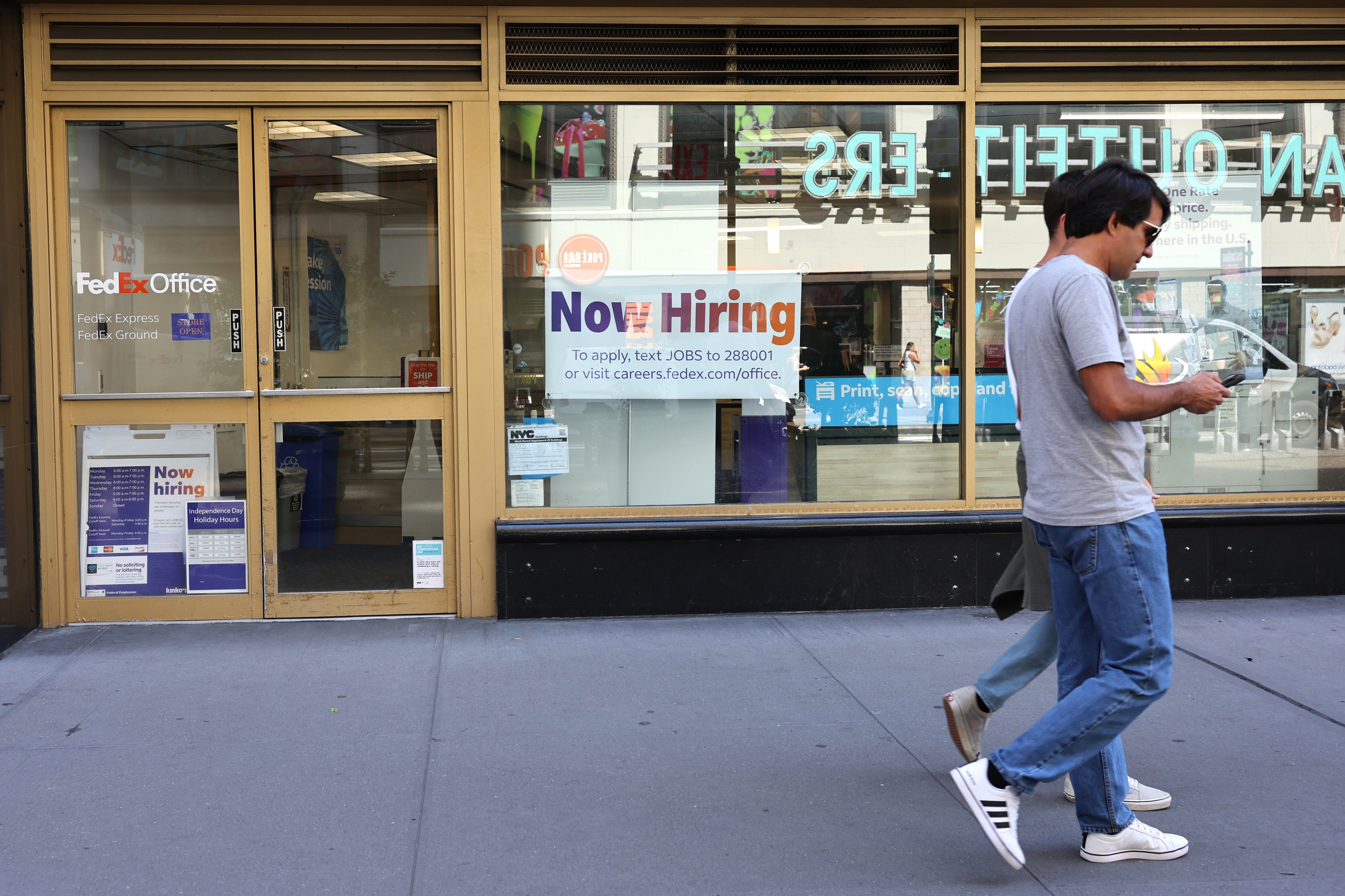Americans are struggling to find new jobs as market changes

The job market is becoming more precarious for job seekers, as more than a third say they’re applying to more jobs than ever but hearing back less, according to new research from LinkedIn.
One in five job seekers who were searching for a job last year are still looking in 2025, and 26 percent said the job market was so challenging they don’t plan to job hunt at all this year.
Why It Matters
After the pandemic happened and remote work surged in popularity, many economists felt the job market had transitioned to an employee market, giving workers more power than they had wielded in the past.
Michael M. Santiago/Getty Images
What To Know
The recent LinkedIn research revealed job searchers were facing increasing challenges.
While over a third of job seekers said they’re applying to more jobs now and hearing back less, there’s also a substantial number of job seekers who have continued to search for employment for more than a year.
Roughly one in five were still looking for a job for more than a year going into 2025, and 26 percent said they don’t plan to job hunt because the current job market is so challenging.
The decreasingly employee-centric job market was also reflected in the fact that more than half of those surveyed said they were open to taking on a role in a new industry, according to LinkedIn.
What People Are Saying
Alex Beene, a financial literacy instructor for the University of Tennessee at Martin, told Newsweek: “It’s no surprise with a higher cost of living and many employee roles facing increased responsibilities that so many are eagerly applying for new positions in the hopes it will lead to better pay and less stress. However, hearing back from an employer isn’t as easy as many think it would be. The problem is with the plethora of opportunities listed on some many online platforms, many applicants end up sending out the same resume and cover letter over and over again. As time-consuming as it is, you have to customize your hiring documents for each position you decide to pursue.”
HR consultant Bryan Driscoll told Newsweek: “Job seekers not hearing back is a failure of the system and modern hiring processes. Companies have leaned heavily into automation and AI to screen resumes, often filtering out qualified candidates before a human ever sees their application. This is inefficient and demoralizing. We’re telling job seekers they need to put in more effort while simultaneously creating systems that disregard that effort entirely.”
Kevin Thompson, a finance expert and the founder and CEO of 9i Capital Group, told Newsweek: “Employers often claim there aren’t enough qualified workers, yet many seem to be searching for overqualified candidates willing to accept lower pay. A growing number of job seekers report encountering ‘ghost jobs’—positions listed online with no real intention of hiring. This trend is becoming more common as employers regain the upper hand in the job market, a shift from the post-pandemic landscape.”
LinkedIn’s career expert Catherine Fisher told Newsweek: “Job seekers are applying to more roles than ever, trying to break through the competitive job market. We’ve seen the number of applicants per job rise from 1.5 in 2022 to 2.5 in fall 2024, creating a hiring bottleneck and causing frustration for both job seekers and hirers. Our recent data shows that nearly one-fifth of HR professionals in the U.S. spend between 3-5 hours a day reviewing applications, with 70% saying less than half the job applications they receive meet all the criteria. Instead of mass applying, job seekers should be more strategic, focusing on roles that match their skillset to stand out.”
Michael Ryan, a finance expert and the founder of MichaelRyanMoney.com, told Newsweek: “The widespread adoption of AI screening tools has created what I call a ‘precision paradox’ in hiring. While these tools help employers filter applications more efficiently, they often screen out qualified candidates who don’t match exact keyword criteria.”
What Happens Next
While many companies are reaching record highs in profits, many of those companies are opting to invest that money in executive bonuses over hiring or raising wages, Driscoll said.
“If job seekers can’t find stable employment, consumer spending, the lifeblood of the economy, slows down,” Driscoll said. “Add to that the fact that 26 percent of people don’t even plan to look for work this year, and you have a labor force increasingly disengaged not because they lack motivation, but because the system keeps beating them down.”
Thompson said many people may stop looking for work altogether, which can lead to long-term unemployment and lower workforce participation.
“If they do re-enter the job market, they may find only high-turnover service sector roles available, leaving them with little to no bargaining power over wages. This shift underscores a fundamental change in the job market—where job seekers once had leverage, the advantage has now shifted back to employers,” Thompson said.
Related
A top recruiter says sports marketing roles are hot right…
Jobs are opening up in the sports industry as teams expand and money flows into the industry.Excel Search &
Public employees and the private job market: Where will fired…
Fired federal workers are looking at what their futures hold. One question that's come up: Can they find similar salaries and benefits in the private sector?
Mortgage and refinance rates today, March 8, 2025: Rates fall…
After two days of increases, mortgage rates are back down again today. According to Zillow, the average 30-year fixed rate has decreased by four basis points t
U.S. economy adds jobs as federal layoffs and rising unemployment…
Julia Coronado: I think it's too early to say that the U.S. is heading to a recession. Certainly, we have seen the U.S. just continue t










